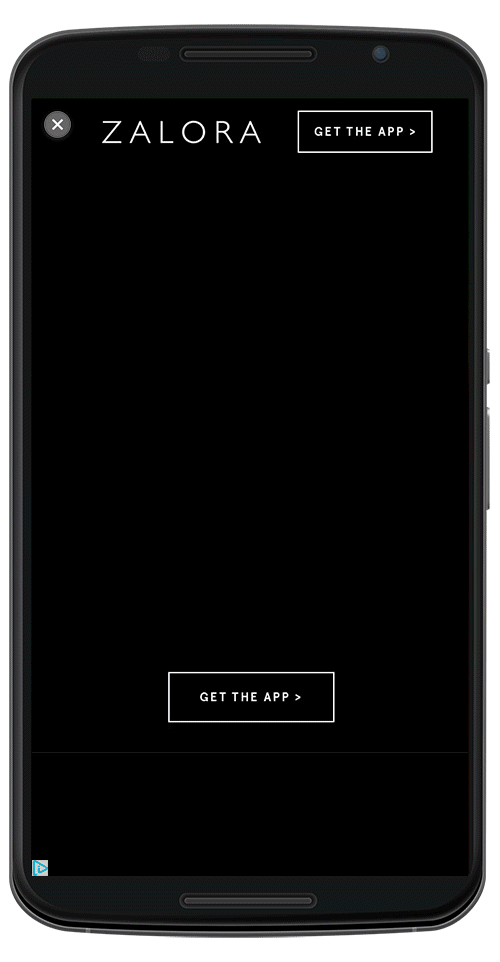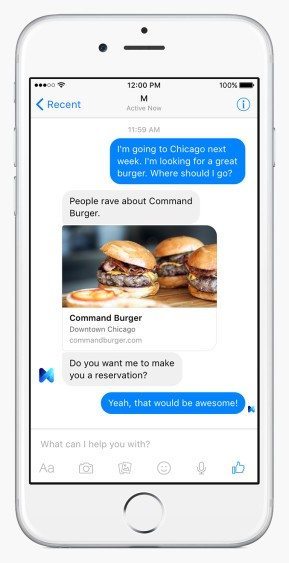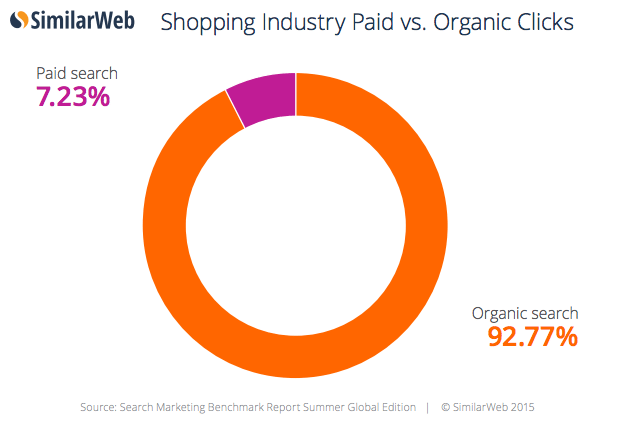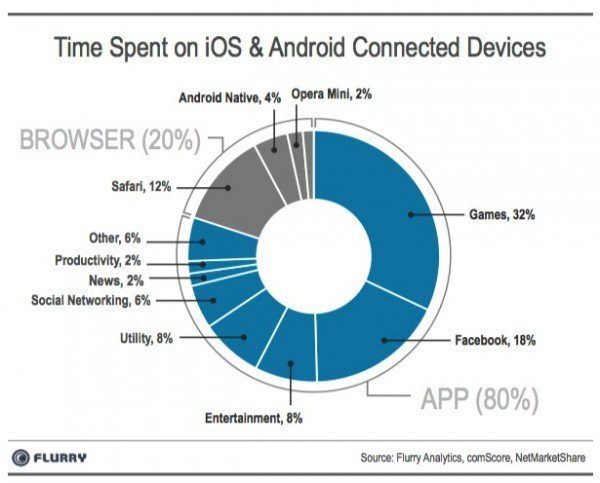What digital marketing trends should you really be aware of in 2016?
This isn’t a post about hot topics and trendy tech. It’s about significant developments that will actually help shape your digital strategy this year.
1. Marketing Attribution
The modern marketer understands that a multichannel strategy is critical to delivering effective messages. And they should also know that the ability to then accurately ‘attribute’ the effectiveness of each channel is as important.
But according to research by Forrester, this is actually proving difficult for most marketers. Just 24% of marketers currently measure their campaigns across multiple channels (both online & offline).
So what does this mean for 2016? Well it represents a pretty big opportunity. If 76% of your competition don’t measure their marketing channels effectively, this gives you a distinct competitive advantage.
The trick is simple: explore various models and drill down to the most efficient combination of channels. Then allocate your budget and time accordingly.
Takeaway — Check out the resources below to help form your multi-channel attribution strategy:
- Check out Avinash Kaushik’s website in particular his comparison of attribution models within Google Analytics.
- Optimising your digital marketing channels.
- Understand your assissted conversions.
2. Mobile (Digital Advertising)
2016 will be the year of mobile… again. This seems a bit arbitrary but the numbers just keep growing with 2015 seeing over half of digital advertising expenditure being spent on mobile ads in the US.
According to eMarketer mobile is expected to grow to 62% of digital spend this year. You can’t ignore these numbers. Let’s take a look at some key mobile marketing trends that present the most exciting opportunities for 2016.
Snapchat
Snapchat is said to be in developing and advertising API which would open it up to a whole host of different ad formats, automation and measurement. So what does the mean for marketers and users? Well this can only be good news for brands for the most part.
Aside from increased touch points with consumers, it offers up more personalisation opportunities and far more accurate measurement of data. Instead of relying on Snapchat, 3rd party data companies would have access to the pools of raw data to derive insights.
You can expect to see direct response campaigns like app downloads and personalised data driven video ads.
Takeaway — Keep an eye on Snapchat ads. They could be a right fit for your brand.
App Streaming
Google announced two new mobile advertising formats on their AdWords blog back in December aimed at improving mobile app downloads. The first of these being Trial Run Ads which allow users to play a 60 second demo of a game without actually downloading it.
This could have a dramatic affect on qualified downloads. Think about how many times have you downloaded an app or a game only to find out it was useless. Expect to see plenty streamed versions of candy crush appearing on your smartphone in 2016.
Another format that Google announced in the same blog post are Interactive Interstitial Ads. These are HTML5 ads that are completely customisable, so in essence you can bring a piece of your app directly to your target customer before they download it.
Expect to see big eCommerce brands adopting these formats in 2016, particularly fashion brands.
Takeaway — If you run an eCommerce website or have an app test out these new formats versus your current display advertising.

Google AdWords – Interstitial Ads
3. Social Media Marketing
Facebook M
Most of us are familiar with digital personal assistants such as Apple’s Siri and Microsofts’ Cortana. Now Facebook has decided to join the party with Facebook M. Essentially Facebook is attempting to turn its Messenger app into the “first stop for mobile discovery”.
The idea behind it is you make requests to M such as book me XYZ restaurant for 7 pm or order my grocery shopping for Monday evening. But rather than being solely AI based it actually has a team of humans behind it to make sure requests are responded to correctly.

Facebook Messenger
Facebook are also trialling a partnership with Uber which lets user request a driver directly through the Messenger app. As it develops, the possibilities are really endless.
With the masses of social data that Facebook possesses you can expect personalised answers based on your friends data, e.g. what would Matt really like for his birthday?
Takeaway — Although this is in a early stage of development, this could be a big deal for localised and intent based search in the future. Be ready!
One of the big announcements you may have heard about recently concerning Twitter is that it plans to move away from it’s 140 character limit. Although not confirmed, Twitter is considering increasing this limit to 10,000 characters! The idea is that Tweets will look the same but have an expandable element.
There are a lot of uncertainties surrounding how this will actually materialise like how will spam be prevented? Will publishers hesitate to use this format instead of linking to their websites? Will there be limits to hashtags and @mentions?
We are not too sure about this move as the whole appeal behind Twitter was it’s snappy, succinct format of conversation. Bending these rules might see it losing it’s unique appeal and identity.
Takeaway — Wait and see what public reaction is before changing your Twitter content strategy.
4. UX and Design
It’s been a long time coming but UX and design are becoming a central focus of digital strategy. Even by looking at recent acquisitions of major consultancy firms you can understand how important design is becoming.
Companies such as Accenture, McKinsey, Deloitte and PwC have all acquired either design agencies or UX agencies
This doesn’t mean that you need to become an expert designer or UX developer but understanding the principles and concepts of user experience are becoming increasingly important.
Here are some predictions from a recent post on UX Magazine that I feel marketing managers should take note of:
- Sticky CTA’s — will become more widespread, especially on mobile.
- Mobile Enabled Experiences — using our smartphones for more day to day actions e.g. payment, smart homes, travel etc.
- Touch Free Inputs — designing apps with less touch inputs and more voice controls.
- Customer Journey Analytics — expect to see more advanced analysis on the masses of customer journey data.
- Consolidation of Apps — too many apps! Expect to see more aggregation and integration within apps. This is already evident with apps such as Google Now.
Takeaway — Examine how effective UX design fits into your overall business strategy. Maybe it should carry more weight in 2016.
5. Personalisation
Personalisation has become a hot topic of late particularly when it comes to eCommerce and UX. Tailoring content and digital experiences to consumer demographics (gathered from data mining of browsing history, location, cookies, etc.) can significantly improve conversions and relevancy.
According to the Aberdeen Group, 75% of consumers prefer when brands personalise messages and offers. So keep this in mind when approaching your personalisation strategy for 2016. Here’s a shorthand structure you can follow to get you thinking:
- Segment your customers/users.
- Identify each groups customer journeys.
- Personalise each Customer Experience by customising touch points.
- Personalise for Conversions by identifying the key factors that influence each customer segment.
- Test & Optimise again and again.
Takeaway — Segment your website users and test out different variations of pages/content using Google Analytics experiments and see if your conversion rates increase. Also, check out some of these providers if you want to take it up a level.
6. Search Marketing
Search will continue to form the foundation of any business’ digital marketing strategy. Search traffic accounts for 27.79% of all web traffic according to a Similar Web Report. So it’s not something you can ignore. Interestingly of this traffic, the overwhelming majority is related to organic, so keep this in mind when deciding how to invest in your search strategy.

Google Algorithms Updates
Algorithm updates can make any SEO manager quiver in their boots. Any major algorithm change could drastically affect rankings and in many cases your entire business. Google is set to launch its next algorithm update in a matter of weeks according to Search Engine Journal.
It’s hard to know exactly what changes will be made but judging from the recent updates and refreshes from Google we can expect that content quality and user experience will be critical factors.
Google just announced their Brotli Algorithm which boosts the speed of Chrome by 26% through compression. This is particularly focused at mobile load speeds and data usage. Mobile SEO will become even more important in 2016 so it’s imperative that your site is optimised to match user intent for search terms originating on mobile devices.
You can read more about understanding user intent and page quality in one of our blog posts here.
Takeaway — Focus on producing high quality content that your target audience is searching for and ensure it delivers on their UX expectations.
App Indexing & Deep Linking
We spend over 80% of our time on our smartphones using apps. Over the past year or so Google has been heavily pushing app indexing & deep linking for both iOS and Android. In 2015 they expanded support to cover iOS through Chrome and Safari.
As a business, you really want to ensure your content is as discoverable as possible. Don’t hide your valuable in-app content from search engines and get your developer to implement this for 2016 (if you haven’t already). You can check out a guide here

Takeaway — Get your app indexed!
7. Wearable Tech and VR
CES typically sets out what to expect in terms of consumer electronics in the new year, so what did we learn for 2016? Well not much really. The conversation was centred around virtual reality, automated cars and the internet of things but the problem lies in consumer adoption.
However, CES did highlight some interesting technology trends that brands can implement to deliver unique experiences. L’Oreal introduced a wearable patch that can detect UV levels and New Balance unveiled their Digital Sports Platform for consumer level, data driven athletic tech.
So expect to see more immersive digital experiences from big brands using wearable technology in 2016.
Another interesting development in wearables is the application of flexible and durable screens. Originating on IndieGoGo, Shiftware plan to launch footwear with digital screens allowing completely customisable designs. They are the first movers in this market and we could see adoption from bigger brands later in 2016.
[ratings]


